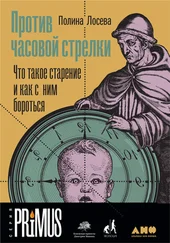Khoury R. & Ghossoub E. Young blood products: emerging treatment for Alzheimer's disease? // Neural Regeneration Research. 2018 Apr; 13 (4): 624–627.
Berzlanovich A. M. et al. Do centenarians die healthy? An autopsy study // The Journals of Gerontology: Series A. 2005 Jul; 60 (7): 862–865.
Kennedy et al. Geroscience: linking aging to chronic disease // Cell. 2014 Nov; 159 (4): 709–713.
Гаврилова С. И. Фармакотерапия болезни Альцгеймера: миф или реальность? // Болезнь Альцгеймера и старение: от нейробиологии к терапии: материалы Второй Российской конференции (Москва, 18–20 октября 1999 г). – М.: Пульс, 1999.
Alzheimer's association. 2018 Alzheimer's disease facts and figures // Alzheimer's & Dementia. 2018 Mar; 14 (3): 367–429.
Hayashi K. et al. Continuous intracerebroventricular injection of Porphyromonas gingivalis lipopolysaccharide induces systemic organ dysfunction in a mouse model of Alzheimer's disease // Experimental Gerontology. 2019 Jun; 120: 1–5.
Spencer P. S., Kisby G. E., Ludolph A. C. Slow toxins, biologic markers, and long‐latency neurodegenerative disease in the western Pacific region // Neurology. 1991 May; 41 (5 Suppl 2): 62–66.
Background Paper 6.11 Alzheimer Disease and other Dementias. https://www.who.int/medicines/areas/priority_medicines/BP6_11Alzheimer.pdf.
https://www.who.int/news-room/fact-sheets/detail/dementia.
An Y. A. & Scherer P. E. Targeting the amyloid precursor protein (APP) to mitochondria of white adipose tissues triggers mitochondrial dysfunction and obesity // Diabetes. 2018 Jul; 67 (Suppl 1).
Grimm M. O. W., Mett J., Grimm H. S., Hartmann T. APP function and lipids: a bidirectional link // Frontiers in Molecular Neuroscience. 2017 Mar; 10: 63.
Tyan S.-H. et al. Amyloid precursor protein (APP) regulates synaptic structure and function // Molecular and Cellular Neuroscience. 2012 Aug; 51 (1–2): 43–52.
Galvão F., Grokoski K. C., da Silva B. B., Lamers M. L., Siqueira I. R. The amyloid precursor protein (APP) processing as a biological link between Alzheimer's disease and cancer // Ageing Research Reviews. 2019 Jan; 49: 83–91.
Nussbaum J. M., Seward M. E., Bloom G. S. Alzheimer disease. A tale of two prions // Prion. 2013 Jan; 7 (1): 14–19.
Clavaguera F., Hench J., Goedert M., Tolnay M. Invited review: Prion‐like transmission and spreading of tau pathology // Neuropathology and Applied Neurobiology. 2014 Nov; 41 (1): 47–58.
Purro S. A. et al. Transmission of amyloid-β protein pathology from cadaveric pituitary growth hormone // Nature. 2018 Dec; 564: 415–419.
Jaunmuktane Z. et al. Evidence for human transmission of amyloid-β pathology and cerebral amyloid angiopathy // Nature. 2015 Sep; 525: 247–250.
См. п. 220.
Zeng Q. et al. Autophagy in Alzheimer's disease and promising modulatory effects of herbal medicine // Experimental Gerontology. 2019 May; 119: 100–110.
См. п. 210.
Mayeux R. et al. Utility of the apolipoprotein E genotype in the diagnosis of Alzheimer's disease // NEJM. 1998 Feb; 338: 506–511.
См. п. 218.
Zou K., Gong J.-S., Yanagisawa K., Michikawa M. A Novel Function of Monomeric Amyloid β-Protein Serving as an Antioxidant Molecule against Metal-Induced Oxidative Damage // The Journal of Neuroscience. 2002 Jun; 22 (12): 4833–4841.
Tamagno E. et al. Oxidative stress increases expression and activity of BACE in NT 2neurons // Neurobiology of Disease. 2002 Aug; 10 (3): 279–288.
Dominy S. S. et al. Porphyromonas gingivalis in Alzheimer's disease brains: Evidence for disease causation and treatment with small-molecule inhibitors // Science Advances. 2019 Jan; 5 (1): eaau3333.
Ezzat K. et al. The viral protein corona directs viral pathogenesis and amyloid aggregation // Nature Communications. 2019 May; 10: 2331.
Griffen A. L. et al. Prevalence of Porphyromonas gingivalis and periodontal health status // Journal of Clinical Microbiology. 1998 Nov; 36 (11): 3239–3242.
Human Herpesviruses. Cambridge University Press, 2007.
Бредесен Д. Нестареющий мозг. – М.: Эксмо, 2019.
Bredesen D. E. et al. Reversal of cognitive decline: 100 patients // Journal of Alzheimer's disease & Parkinsonism. 2018; 8: 5.
См. п. 93.
Livshits G. & Kalinkovich A. Inflammaging as a common ground for the development and maintenance of sarcopenia, obesity, cardiomyopathy and dysbiosis // Ageing Research Reviews. 2019 Dec; 56: 100980.
Melzer D. et al. The Age UK almanac of disease profiles in later life. Ageing Research Group, University of Exceter, 2015.
Dengler-Crish C. M. & Elefteriou F. Shared mechanisms: osteoporosis and Alzheimer's disease? // Aging. 2019 Feb; 11 (5): 1317–1318.
Belikov A. V. Age-related diseases as vicious cycles // Ageing Research Reviews. 2019 Jan; 49: 11–26.
Franceschi C. et al. Immunosenescence in humans: deterioration or remodelling? // International Reviews of Immunology. 1995; 12 (1): 57–74.
Levine M. E. Modeling the Rate of Senescence: Can Estimated Biological Age Predict Mortality More Accurately Than Chronological Age? // The Journals of Gerontology: Series. 2013 Jun; 68 (6): 667–674.
Jylhävä J., Pedersen N. L., Hägg S. Biological age predictors // EBioMedicine. 2017 Jul; 21: 29–36.
Fried L. P. et al. Frailty in older adults: evidence for a phenotype // The Journals of Gerontology: Series A. 2001 Mar; 56 (3): M146–M157.
Jazwinski S. M. & Kim S. Metabolic and genetic markers of biological age // Frontiers in Genetics. 2017 May; 8: 64.
Williams D. M., Jylhävä J., Pedersen N. L., Hägg S. A frailty index for UK Biobank participants // The Journals of Gerontology: Series A. 2019 Apr; 74 (4): 582–587.
Mitniski A. et al. Age-related frailty and its association with biological markers of ageing // BMC Medicine. 2015 Jul; 13: 161.
Jylhävä J., Jiang M., Foebel A. D., Pedersen N. L., Hägg S. Can markers of biological age predict dependency in old age? // Biogerontology. 2019 Jan; 20: 321–329.
Belsky D. W. et al. Quantification of biological aging in young adults // PNAS. 2015 Jul; 112 (30): E4104–E4110.
Читать дальше
Конец ознакомительного отрывка
Купить книгу












